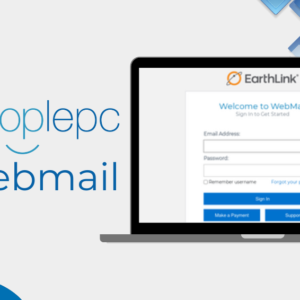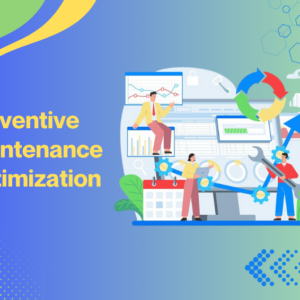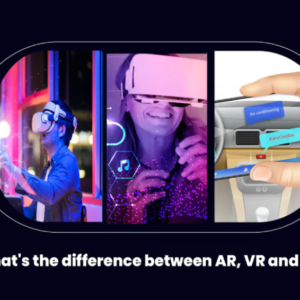As technology advances at a swift pace current markets demonstrate Software-as-a-Service models in their role as dominant providers. SaaS solutions deliver both convenience and scale while minimizing costs which makes them perfect for businesses regardless of their size. The development of a SaaS product needs deliberate selection of appropriate development frameworks and additional software tools. A carefully selected framework serves as a critical determinant for an application’s operational characteristics including performance abilities alongside scalability potential and maintenance needs.
We explore top SaaS development frameworks through a detailed examination of their features and advantages and which applications perform best in each case. Both new startups beginning their first SaaS venture and mature corporations aiming to enhance their existing products can use this guide to assess available solutions.
What is SaaS Development Framework?
Software SaaS development framework is typically employed by companies to aid in the creation of websites. Picking a SaaS expansion plan is critical because it will affect the company’s finances and management.
It provides a framework upon which and as an addition to existing platforms, allowing developers to integrate a wide variety of tools, websites, SEOs, and APIs. The system equips programmers to deliver constant quality and build attractive tools for expanding businesses.
Since your SaaS application will be automatically updating itself and adapting to new standards as they emerge, the structure you choose for its creation should be adaptable. Also, as your company grows, coders can keep up with the times by adding the most cutting-edge tools.
What to Look for in a SaaS Development Framework
A fundamental understanding of the crucial elements that determine framework suitability for SaaS development must precede our exploration of specific frameworks. Here are some critical aspects to consider:
- Scalability: SaaS applications often need to handle a growing number of users and data. A framework should support horizontal and vertical scaling to accommodate growth seamlessly.
- Security: HIPAA and other regulatory standards make data protection essential for Software as a Service (SaaS) products which must operate within GDPR and CCPA frameworks. A strong framework needs to provide inherent security functions along with basic templates for third-party integration capability.
- Flexibility: The framework should allow developers to customize and extend functionality easily. Flexibility is vital for meeting unique business requirements.
- Performance: High performance and low latency are non-negotiable for SaaS applications. A framework that optimizes backend processes and efficiently manages resources is ideal.
- Community Support: Frameworks with active communities and extensive documentation are easier to work with. This support can save time and effort during development and troubleshooting.
Now that we understand the criteria, let’s explore the top frameworks for SaaS development.
Best SaaS Development Frameworks
Our article reviews top SaaS development frameworks for creating applications. We will show you how these SaaS frameworks enable fast and productive software product development.
1. Ruby on Rails
A web application framework designed with Ruby serves as the fundamental structure known as Ruby on Rails (RoR) which retains its high popularity. RoR streamlines development workflows by implementing default settings which reflect its “convention over configuration” business methodology.
Why It’s Great for SaaS Development
- Rapid Development: RoR enables developers to build applications quickly, thanks to its vast library of pre-built modules and gems.
- Scalability: RoR which was once considered ideal only for small scale applications now supports massive SaaS platforms.
- Built-in Security: RoR contains tools to defend against SQL injection attacks while offering protection from cross-site scripting and enabling encrypted secret management.
Use Cases
RoR is ideal for startups and small to medium-sized businesses building SaaS products like project management tools, CRMs, and marketplaces.
2. Django
The high-level Python web framework Django follows a “batteries-included” approach making it fully equipped for development needs. Developers can construct web applications using Django because all essential features come built into it.
Why It’s Great for SaaS Development
- Scalability and Speed: Django manages big web traffic loads and extensive data operations.
- Security: The framework stays secure because of features that prevent SQL injection and XSS attacks alongside a strong authentication system.
- Flexibility: Developers can create advanced functionalities without starting development from scratch.
Use Cases
Data-dependent SaaS applications including analytics platforms together with e-commerce systems and educational infrastructures benefit from Django’s capabilities.
3. Node.js
Node.js acts as a runtime environment enabling developers who write in JavaScript to create server-side applications. It received recognition because it uses a non-blocking I/O model which works with events.
Why It’s Great for SaaS Development
- Performance: The Node.js runtime environment demonstrates superior performance for applications which demand real-time communication such as chat platforms and collaborative software.
- Scalability: Scaling is made simple through Node.js microservices framework design.
- Vast Ecosystem: The Node Package Manager provides developers full access to myriad libraries and tools.
Use Cases
Real-time SaaS solutions, including collaboration tools and IoT platforms alongside live streaming services, perform best when built using Node.js.
4. Laravel
Developers praise Laravel as a PHP framework for its sophisticated syntax alongside easy-to-use developer tools. With Laravel developers don’t have to handle routing and authentication separately because it automatically does necessary caching and authentication integrations.
Why It’s Great for SaaS Development
- Modular Architecture: Developers can effortlessly adjust Laravel’s modular framework to fit new requirements while maintaining system growth capacity.
- Eloquent ORM: Laravel helps developers handle database actions while making complex data structure management simpler.
- Built-in Tools: Features like queue services, task scheduling, and testing tools streamline development.
Use Cases
Laravel is perfect for SaaS products that require robust backend systems, such as subscription-based services and content management platforms.
5. React (for Frontend)
React functions solely as a JavaScript library although developers around the world use it extensively for crafting dynamic user interfaces. Meta (formerly known as Facebook) manages the React project.
Why It’s Great for SaaS Development
- Component-Based Architecture: Encourages reusability and faster development.
- High Performance: React’s virtual DOM optimizes rendering for complex UIs.
- Flexibility: Can be paired with various backend frameworks.
Use Cases
React works best for Software as a Service solutions that focus on user experience including applications like dashboards and broader analytic platforms as well as customer management portals.
6. Angular
Google maintains Angular which uses TypeScript to develop web applications. Angular’s capabilities include a fully featured set of options alongside two-way data binding capabilities.
Why It’s Great for SaaS Development
- Full-Stack Capabilities: Angular provides everything needed to build robust single-page applications (SPAs).
- Strong Ecosystem: Includes tools for routing, state management, and testing.
- Enterprise-Ready: Angular is well-suited for large-scale, complex applications.
Use Cases
Angular shines in enterprise SaaS applications that require high levels of functionality and performance.
7. Spring Boot
Spring Boot represents a Java framework which streamlines the creation of applications ready for production deployment. It exists as a component within the extended Spring ecosystem.
Why It’s Great for SaaS Development
- Scalability: Designed to handle enterprise-grade applications.
- Security: The system provides native support mechanisms for both authentication and authorization functions.
- Microservices-Friendly: The framework makes building microservices-based architectures simpler.
Use Cases
Spring Boot is ideal for enterprise SaaS platforms, financial systems, and other mission-critical applications.
8. ASP.NET Core
Microsoft constructs web applications and APIs using the cross-platform solution named ASP.NET Core.
Why It’s Great for SaaS Development
- Performance: Known for its high-speed capabilities and efficient memory usage.
- Versatility: Supports multiple programming languages like C# and F#.
- Enterprise-Grade Features: Provides essential instrumentation to control authentication methods along with data retrieval capabilities and deployment functions.
Use Cases
Enterprise SaaS organizations alongside product developers use ASP.NET Core for creating both cloud-based applications and APIs.
9. Flask
Python developers utilize Flask because it delivers core web application tools as a lightweight framework without excess features.
Why It’s Great for SaaS Development
- Flexibility: Developers select libraries and development tools that match specific requirements they have.
- Simplicity: Developers will find Flask simple to master and deploy making it suitable for smaller development teams.
- Extensibility: This software module supports additional complex feature integration when it becomes necessary.
Use Cases
Small to medium SaaS applications along with underdeveloped prototypes and essential MVPs (Minimum Viable Products) benefit maximally from using Flask as their framework.
Conclusion
Software as a Service (SaaS) development gains ever-growing traction in businesses regardless of their size. Stakeholders must make careful framework selections when they design SaaS applications. Different frameworks exist for building SaaS applications accompanied by unique pros and cons.
I explained which frameworks developers can use to build successful SaaS applications with efficiency. This session explains the primary applications of selected frameworks for creating effective applications that demand minimal developer effort.
Project requirements determine the most appropriate SaaS development framework which developers need to establish both efficiency and cost effectiveness in their solutions.






